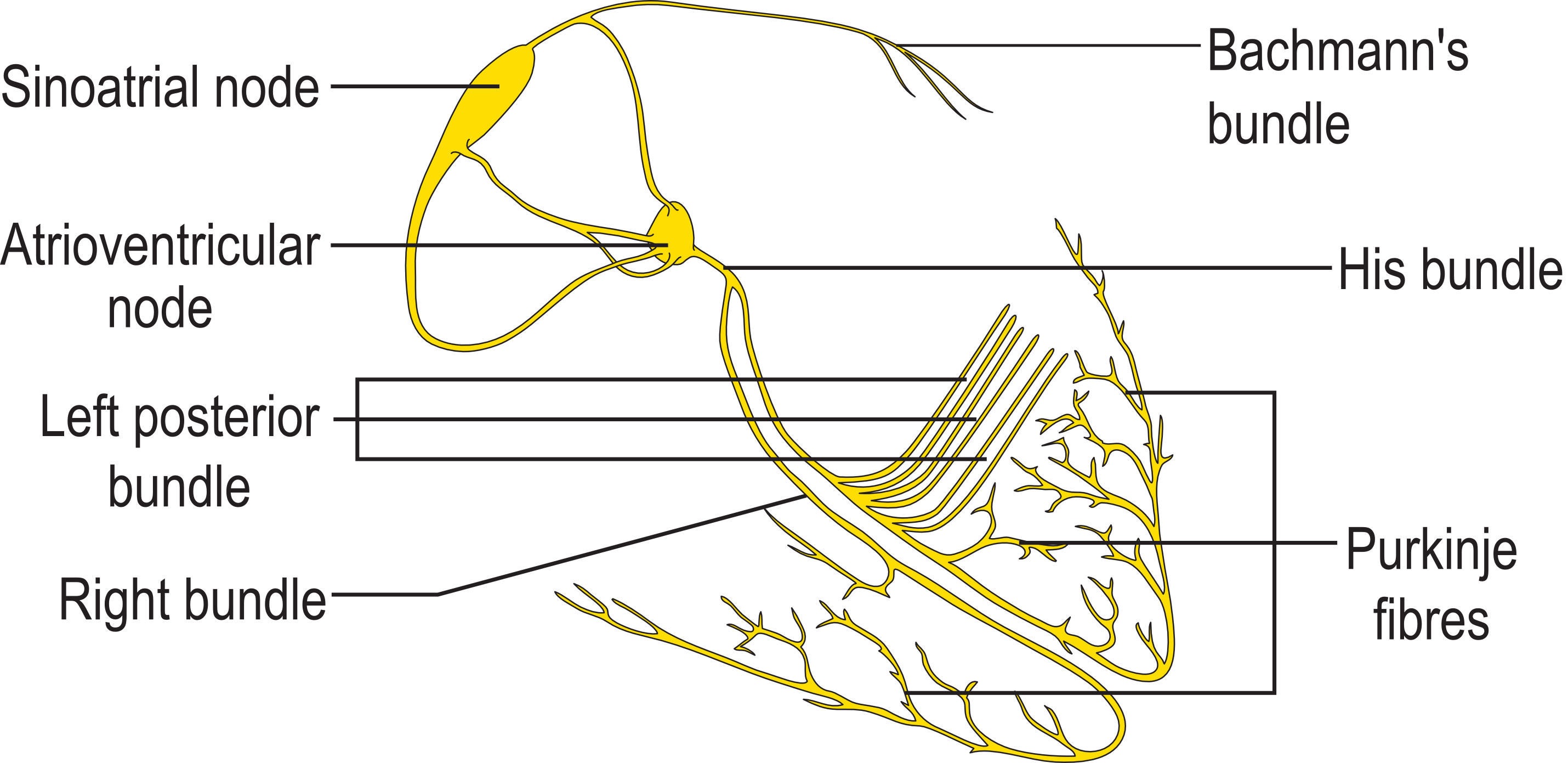Right bundle branch block pathophysiology
|
Right bundle branch block Microchapters |
|
Differentiating Right bundle branch block from other Diseases |
|---|
|
Diagnosis |
|
Treatment |
|
Case Studies |
|
Right bundle branch block pathophysiology On the Web |
|
American Roentgen Ray Society Images of Right bundle branch block pathophysiology |
|
Risk calculators and risk factors for Right bundle branch block pathophysiology |
Editor-In-Chief: C. Michael Gibson, M.S., M.D. [1]; Associate Editor(s)-in-Chief: Aarti Narayan, M.B.B.S [2], Raviteja Guddeti, M.B.B.S. [3]
Pathophysiology
Normal Conduction
- The normal cardiac conduction proceeds in a way so as to allow time for the atrium to relax during atrial diastole.
- The electrical impulse generated in the SA node travels through the internodal pathways towards the AV node.
- The conduction through the AV node is slowed down as it travels through the node. This decrease in velocity of conduction allows time for the atrium to contract ahead of the ventricle so that the blood from the atria can fill up the ventricles through the atrio-ventricular valves.
- As the impulse flows through the compact AV node, it rapidly conducts through the ventricular myocardial cells. Once the depolarization is complete, the ventricle relaxes during diastole in preparation for the next impulse.

Anatomy
- The conduction system of the heart consists of specialized cells designed to conduct electrical impulse faster than the surrounding myocardial cells.
- Anatomically, the AV node is divided into three regions as follows:
- Transitional cell zone: This is the region where the internodal atrial pathways merge with the compact AV node.
- Compact AV node: This region is located at the apex of the triangle of Koch, which is formed by the ostium of coronary sinus, tricuspid annulus and the tendon of Todaro.
- Penetrating portion of the AV bundle: This region enters the tendon of Todaro and runs within the fibrous body of the membranous interventricular septum and eventually divides at the crest of the muscular interventricular septum into right and left branches.
- The right bundle branch is the direct continuation of the penetrating bundle of His. It continues along the surface of the right side of the interventricular septum, below the papillary muscle of conus. It then proceeds towards the apex and passes through the moderator band to the base of the anterior papillary muscle and then to the free wall of the right ventricle.

Pathophysiology
- Right bundle branch block occurs when the electrical impulse is not conducted along the right bundle branch.
- As the conduction along the left bundle branch remains unaffected, the electrical impulse travels normally within the septum from left to right.
- However, the right ventricular contraction occurs comparatively slowly giving the characteristic 'M' pattern on the electrocardiogram.
Genetics
- Familial cases of right bundle branch block have been observed in 4 Lebanese families and the abnormality was mapped to chromosome 19.
- There is a subset of patients with Brugada syndrome who have mutations in SCN5A, the gene encoding for the voltage-gated cardiac sodium channel.
Associated Syndromes
- Duchenne muscular dystrophy
- Myotonic dystrophy: Other ECG findings include first-degree AV block, left anterior fascicular block, and intraventricular conduction delay. Patients may have arrhythmias and/or Stokes-Adams attacks.
- Kearns-Sayre Syndrome
- Brugada syndrome
Pseudo Right Bundle Branch Block
Brugada syndrome: This syndrome is due to a channelopathy mediated by the SCN5A gene. It is important to note that the RBBB pattern seen in patients with this syndrome is not actually RBBB but is instead due to a repolarization abnormality. It is for this reason that the RBBB like pattern in Brugada syndrome is referred to as a 'pseudo right bundle branch block.' In this syndrome, the ECG shows ST-segment elevation in leads V1-V3. Cocaine consumption and / or the use of the antiarrhythmic propafenone may unmask the ECG findings of Brugada syndrome.